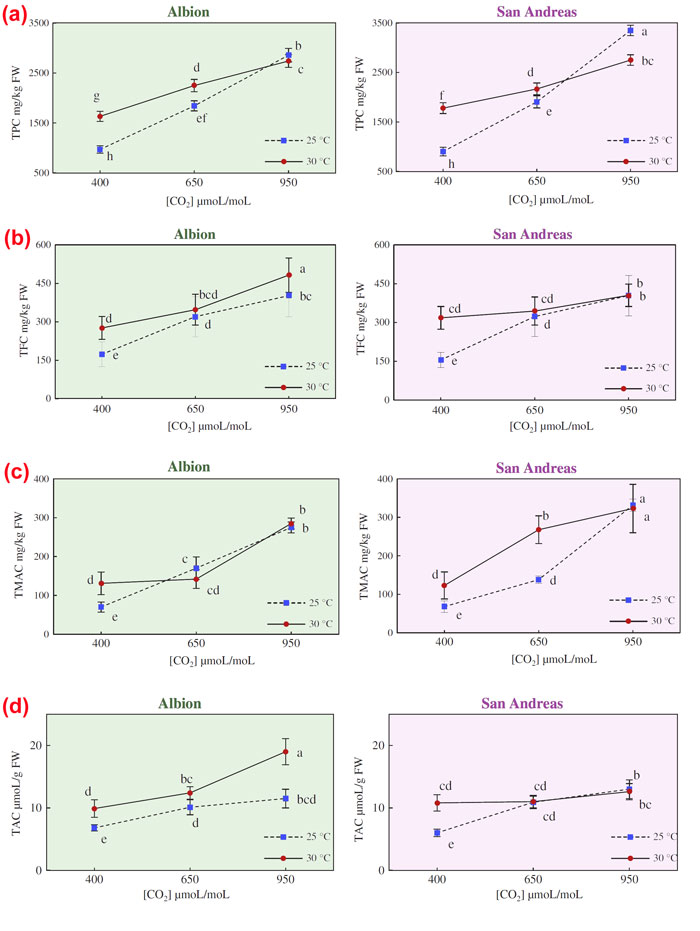| Tweet | Follow @co2science |
Paper Reviewed
Balasooriya, H.N., Dassanayake, K.B., Seneweera, S. and Ajlouni, S. 2019. Impact of elevated carbon dioxide and temperature on strawberry polyphenols. Journal of the Science of Food and Agriculture 99: 4659-4669.
Strawberry (Fragaria ananassa) is in high demand globally, gaining further prominence in recent years due its nutritional properties, including minerals, vitamin C, folates, antioxidants and polyphenols. How these and other key nutritional substances and properties of this fruit might be changed or altered in response to future climate change was the subject of a recent paper by Balassoriya et al. (2019).
Working in controlled-environment chambers as the Parkville Campus of the University of Melbourne, Australia, the four scientists who conducted this study grew two strawberry cultivars (Albion and San Andreas) under two temperatures (25°C or 30°C) and three CO2 concentrations (400, 650 or 950 ppm). At harvest, they analyzed multiple nutritional properties of the fresh strawberry fruit to ascertain how they changed in response to increasing temperature and/or atmospheric CO2.
The results are summarized in the figure below. As noted by the authors, when compared to plants growing under ambient conditions, "elevated CO2 and higher temperature caused significant increases in total polyphenol, flavonoid, anthocyanin and antioxidants in both strawberry cultivars."
Commenting on these important findings, Balasooriya et al. note that, "as polyphenols, flavonoids, anthocyanins, and antioxidants are considered to be important fruit bioactive compounds, increasing the content of such fruit nutrients with elevated CO2, higher temperature and their interactions would improve strawberries' functional properties." "Consequently," they continue, "strawberries grown under higher temperatures (30°C) and elevated CO2 (650 and 950 ppm) could support better human health."
How about that; the future climate that alarmists claim will be detrimental to the planet, thanks to the supposed "twin evils" of rising temperature and higher levels of atmospheric CO2, will actually stimulate the growth and nutritional properties of strawberries, which improvement has important implications for enhancing human health.
Atmospheric CO2, it not as dangerous as climate alarmists make it out to be!

Figure 1. Total polyphenolic content (TPC, Panel a), total flavonoid contents (TFC, Panel b), total monomeric anthocyanin contents (TMAC, Panel c) and total antioxidant contents (TAC, Panel d) of two different strawberry cultivars ('Albion' and 'San Andreas') at different combinations of temperature and CO2. Error bars indicate the standard deviation of data (n = 12). Different letters are significantly (P ≥ 0.05) different. Source: Balasooriya et al. (2019).




